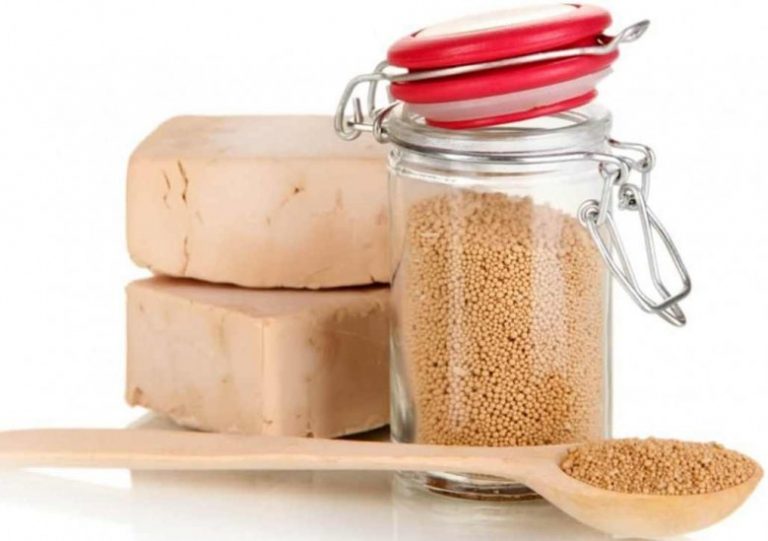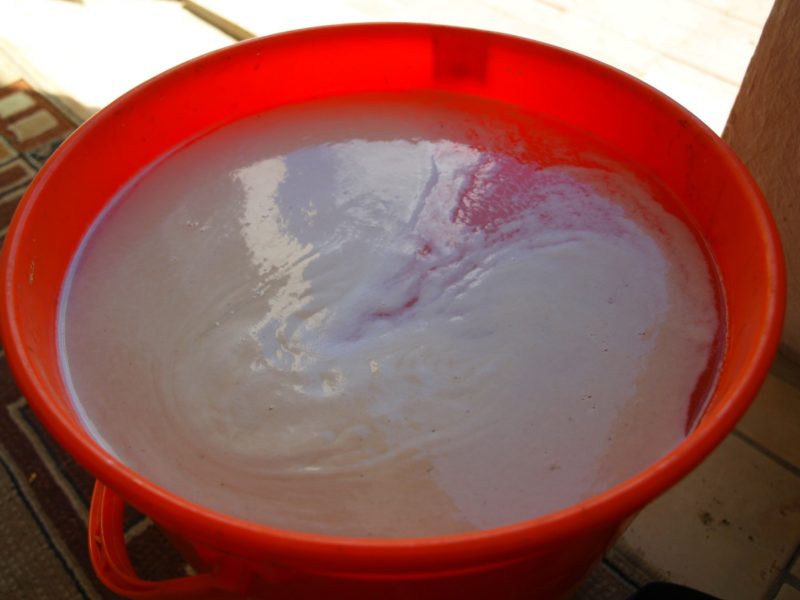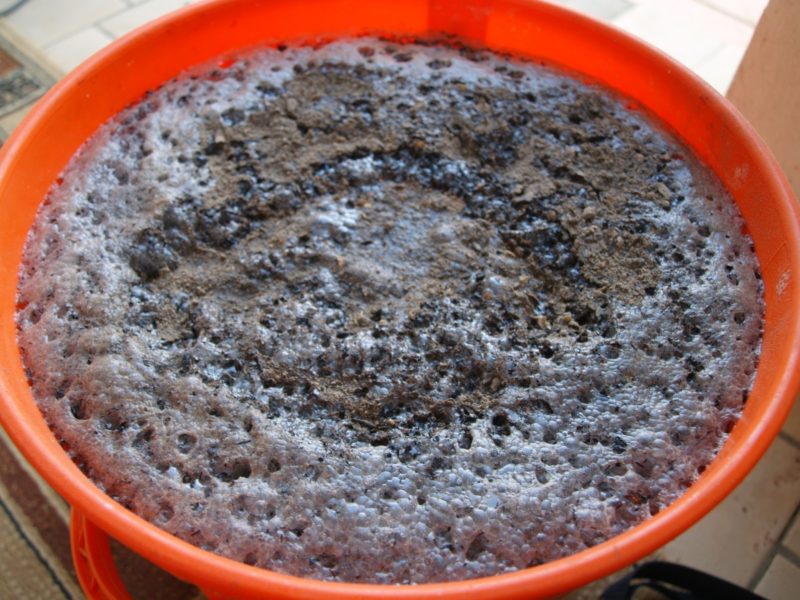Yeast is a product used not only in cooking. Also in gardening, young plants are fed with yeast solutions and seeds are soaked in them. In the composition of yeast: carbohydrates; proteins nitrogen; phosphorus; fats potassium; magnesium; riboflavin; thiamine; folic, nicotinic, paraaminobenzoic acid. All of these substances help the development of plants. Solanaceae, cucumbers, strawberries, various flowers are responsive to feeding from yeast.
Material Content:
Yeast plant nutrition: beneficial properties
Yeasts contain fungi that improve the structure of the earth, organic matter begins to decompose more intensively, fungi in yeasts protect plants from diseases, repel pests and mice. They help to form the crop faster, contribute to the development of roots, foliage and stems.

From yeast, cultures are made more resilient, they are strengthened.
Watering the seedlings with yeast solution ensures that they grow normally, do not stretch, calmly tolerate the transplant, take root more easily in a new place.
Fertilizer from yeast makes plant growth more intensive, avoids the growth of harmful nitrates in fruits due to the use of a large number of mineral fertilizers. Yeast helps the development of beneficial bacteria and microorganisms.
It is interesting: how to make yeast - as a fertilizer for plants
Yeast solutions make root formation more active. According to studies when feeding with yeast, the roots grow 1.5 weeks earlier.
How to prepare plant nutrition from yeast?
To prepare top dressing, you can take raw packaged yeast, or dry. Also, instead of yeast, you can make infusions from crackers, old bread that has become hardened.
You can add to such fertilizers: mowed weeds, tops from potatoes, fallen leaves, hops. The best fertilizing comes after fermentation, as this process provides the release of nitrogen, which contributes to the growth of green mass of plants.

But when feeding, it is required to take into account some nuances. It takes some time for the yeast to release useful substances, the earth must be warmed up, in cold soil the yeast will not affect the plants. Do not take expired yeast for fertilizer. Although the yeast is quite tenacious, they are frozen, dried, pressed, but they do not tolerate proximity to other bacteria. And if you use bread, then it should be callous, but not moldy.
Generic Fertilizer Recipe
Take:
- ten-liter bucket of clean water;
- dry yeast packet;
- 2-3 tbsp. tablespoons of granulated sugar.
Pour warm, clean water into a bucket. Sprinkle a packet of yeast. Stir vigorously and add granulated sugar. Put in a warm room and leave for 2-3 hours.
Attention! Yeast has one drawback: they can absorb potassium and calcium from the earth.
To avoid a lack of these elements, it is required to pour a glass of ash into the ready-made infusion. And then mix again. Then, every liter of the finished solution, dilute 5-6 liters of water and apply.
Top dressing for cucumbers, tomatoes and eggplants
It is best to make fertilizer from yeast for cucumbers and tomatoes, as well as eggplant.
Top dressing tomatoes in the open ground
7 days after planting the seedlings on the site, feed the bushes. Pour water at a temperature of + 25-30 ° C into a ten-liter bucket. Then quickly add 10 g of dry yeast. Add 2 tbsp. brown sugar boats. Leave for 2 hours. Then the resulting dressing is diluted with another 5 buckets of water. Pour half a liter of solution under the seedling.
Feed the seedlings again with yeast after it has taken root. Make the same composition, but pour 1 liter of solution under 1 seedling.
Feed the seedlings a third time before budding. The composition is done similarly to the first, but poured under a bush of 2 liters.
Topping tomatoes in a greenhouse
First, top dressing of tomatoes is done after the seedlings have taken root, then before buds are opened.
Pour 50 g of bird droppings into 5 liters of water, mix gently, leave for 3 days, you will get a composition called extract from chicken droppings. Then pour the hood into a ten-liter bucket of warm, clean water. Add another 10 g of dry yeast, half a liter of ash, 5 tbsp. tablespoons of granulated sugar. Let it stand for 3 hours, then add water at a rate of 1:10. Pour 0.5-2 liters of infusion under each seedling. Water from a watering can with a strainer, stepping back a short distance from the bushes so that the mixture does not fall directly under the roots.
Feeding cucumbers
You must not make yeast fertilizer too often, as this reduces potassium, calcium in the soil, and yeast also releases too much nitrogen. Because of this, be sure to add ash.
Pour into a ten-liter bucket first on 2/3 brown bread, and then add warm water to the top of the bucket, cover with a lid, and place 2-3 bricks on the lid. Leave for a week in a warm place. Then pour more water in a ratio of 1: 3. Add another 300 g of ash. Water by pouring half a liter of kvass under the bush. This is done every 2 weeks. Cucumbers are fed with leaven no more than 5 times.
Eggplant Feeding
Collect 1 bucket of herbs (plantain, hops, nettle), pour 500 g of crackers or bread. Add another 500 g dry yeast, 500 g ash. Place these ingredients in a barrel in which 50 l of water is poured and leave for a couple of days. After watering the eggplant bushes.
Another yeast nutrition for plants, recipe. In a ten-liter bucket of water, pour 100 g of fresh yeast, 2-3 tbsp. tablespoons of granulated sugar, 500 g of ash and 500 g of chicken droppings. Leave on for 2-3 hours.And then pour 2 liters of composition under each bush.
Live Yeast Fertilizer

Pour 5 parts of water into 1 part fresh yeast, mix, pour 1 part ash. Wait 2-3 hours. Pour another 10 parts of water before watering.
Dry yeast dressing
Pour into a ten-liter bucket of water 2 tbsp. tablespoons dry yeast, 4 tbsp. tablespoons of sugar, 4 g of vitamin C, a handful of earth, 500 g of ash. Mix and let stand for a day. Then, before watering, dilute 1 part of the obtained infusion with 10 parts of pure water.
Bread and yeast recipe

In a ten-liter bucket, put the crusts of bread, one pack of dry yeast, pour a glass of ash, pour a glass of sour milk. Pour in water. Wrap the bucket in an old blanket and place in heat to make the composition wander. Advise 2 times a day to mix the composition. After 7 days, the leaven can be applied.
Hop Fermentation

Pour water into a saucepan, bring to a boil, pour a glass of hop cones, cook on low heat for about an hour. Then cool, strain through a sieve or cheesecloth. Pour 2 tbsp. tablespoons of sugar, 4 tbsp. tablespoons of flour. Wait 2 days for the composition to ferment. Then grate 2 potatoes in a sourdough and leave for another day. The leaven will be completely ready, it can be used.
For which plants is it better not to use yeast bait?
Potatoes, onions and garlic should not be fed with yeast. If you feed the potato, then its tubers will lose their rich taste, become very loose. Such potatoes will not lie in the storage for a long time, it will quickly rot.












